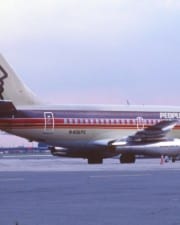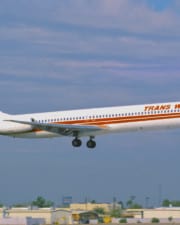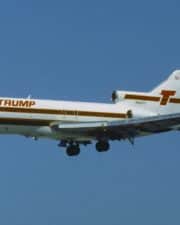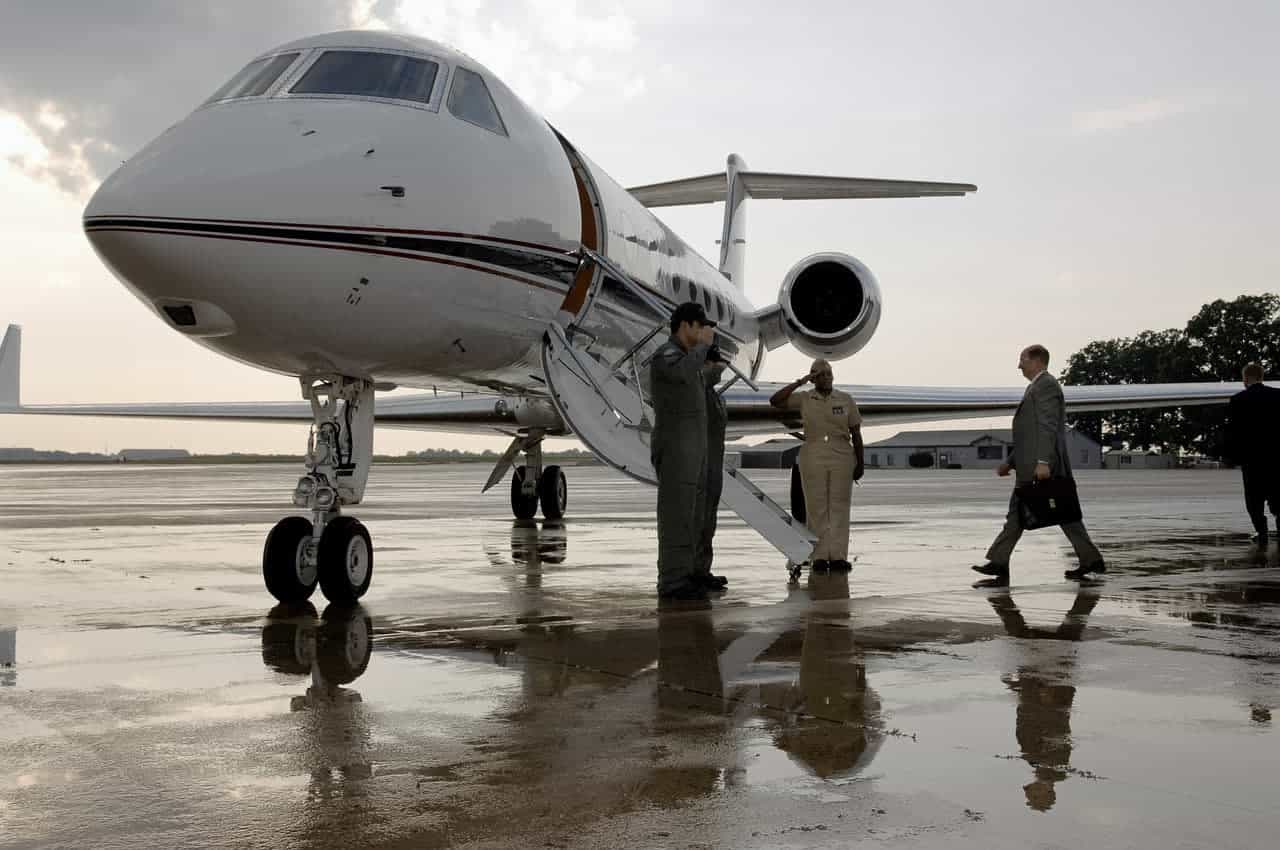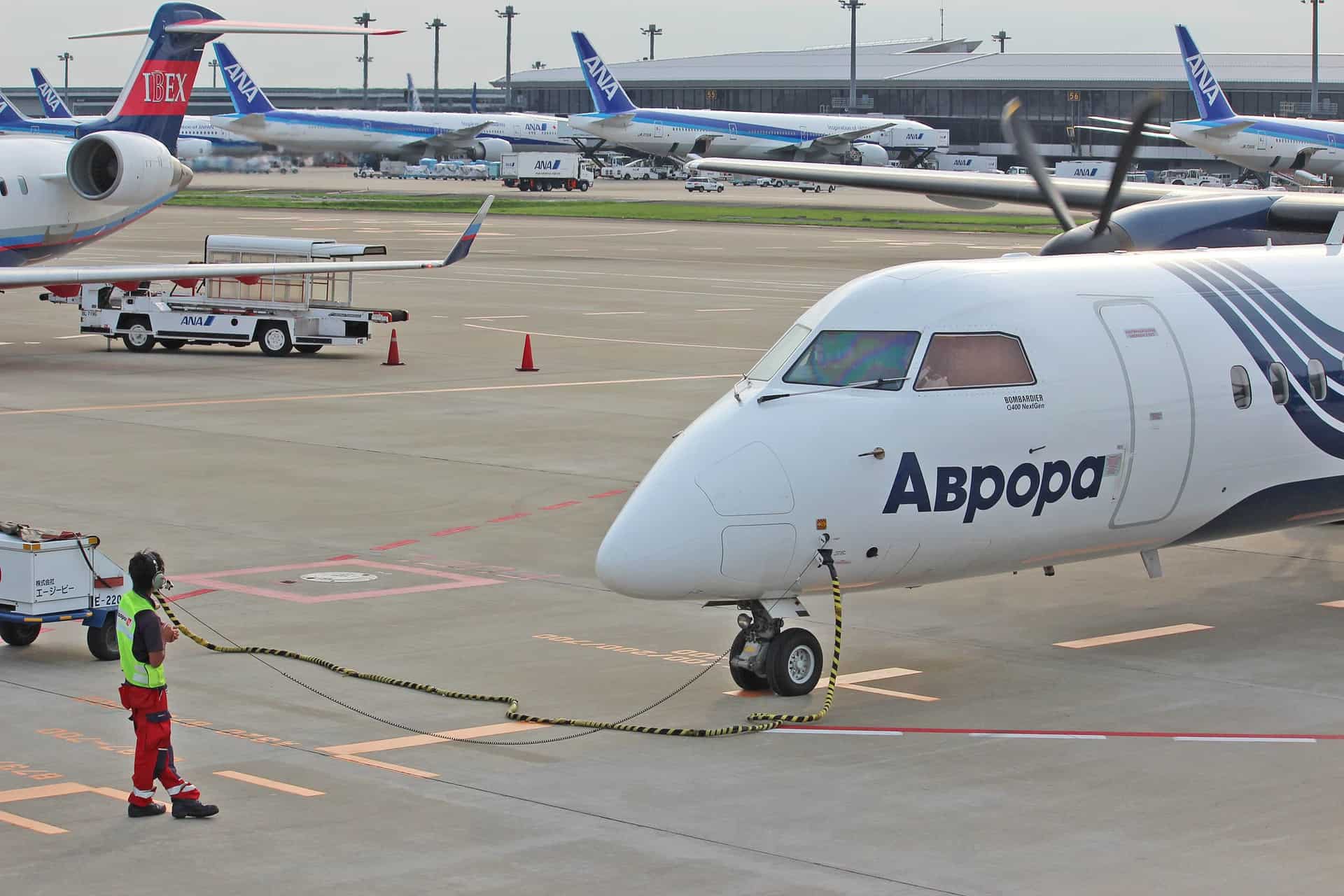In March of 2020, Flybe ceased to fly or be. It was the latest casualty of a British economy that was undergoing massive changes pre-Brexit as well as a global health crisis and will only continue to do so now that Brexit has occurred.
The most well-known among these casualties was Thomas Cook, the travel agency and airline that lasted from 1841 to 2019.
You read that right. Thomas Cook lasted from the reign of Queen Victoria and the books of the Bronte Sisters to Boris Johnson and Love Island. (Oh, what a way to go…) British people everywhere know one of the all-time great slogans: “Don’t just book it, Thomas Cook it!”
But what about Flybe? For all the hullabaloo about the end of a British corporate and cultural icon in Thomas Cook, Flybe’s farewell has flown under the radar by comparison. Airline news has reported it, of course, but it hasn’t gotten the same wall-to-wall BBC retrospective and sendoff.
So, let’s do so here: what was Flybe, how did it begin, what was it like, and most of all, why did Flybe fail?
Table of Contents
1979 to 2002: Jersey European Airways to Flybe
Flybe’s can’t trace its beginnings back to the age of the Bronte Sisters, but it can trace it back to the era of Sister Sledge. In 1979, while “We Are Family” was burning up the disco charts, Jersey European Airways, Flybe’s earliest predecessor, took to the air.
Jersey European Airways’ initial fleet consisted of Douglas DC-3s, which were propeller-driven. Keep in mind this is 1979. If Britain could enjoy Tom Baker as the Fourth Doctor (still the best) surely Jersey European Airways could do better than that decades into the age of jet travel.
Well, keep in mind that while the US’s 70s economy was bad, things were even worse in the UK. The End of Empire, hugely weakened pound, failed Tory and Labour economic policies, power shortages – besides Doctor Who, David Bowie, and a bunch of Punk Rockers, the UK was in dire straits.
Thankfully, Jersey European Airways did modernize, gradually incorporating jets into its fleet. Their first jets were British Aerospace 146s, which were designed for short-haul service.
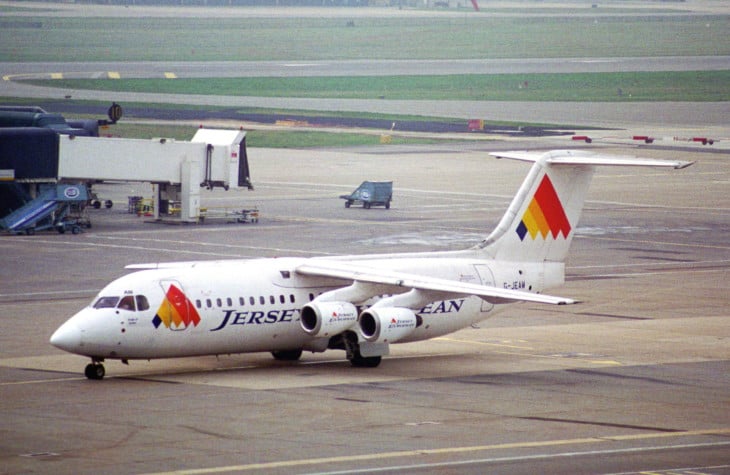
This worked perfectly as Jersey European Airways was a strictly-regional carrier. Their routes were short, and often stopping at smaller, less expensive airports (for example, Gatwick in London instead of Heathrow).
At their biggest, these craft could seat 112 passengers, were 102 ft long, had a wingspan of 86.4 ft, Lycoming ALF 502R-5, Avro RJ: Honeywell LF 507-1F engines, and a top speed of roughly 490 mph.
These improvements continued through the 90s as the airline serviced UK and short-distance EU routes, until finally in 2002 they rebranded to become Flybe.
2002: Flybe Is Born
While it took the global airline industry years to recover from 9/11, it eventually did, and when people were ready to fly again, Flybe was ready. They had come a long way from their propeller-driven origins, upgrading again from the British Aerospace 146s to Q400s as well as Embraer 195s.

The former is a turboprop aircraft similar to those used as part of Alaska Air’s fleet. The Alaska Air models feature 76 seats and a crew of two pilots and two flight attendants. It is nearly 108 ft long, a wingspan of just over 93 ft, and a top speed of 414 mph.
The Embraer 195s were an even bigger upgrade, with a flight radius that can cover most of Europe and a max operational range of just shy of 2,650 mi, allowing Flybe to in theory take passengers on budget flights to most of the EU.
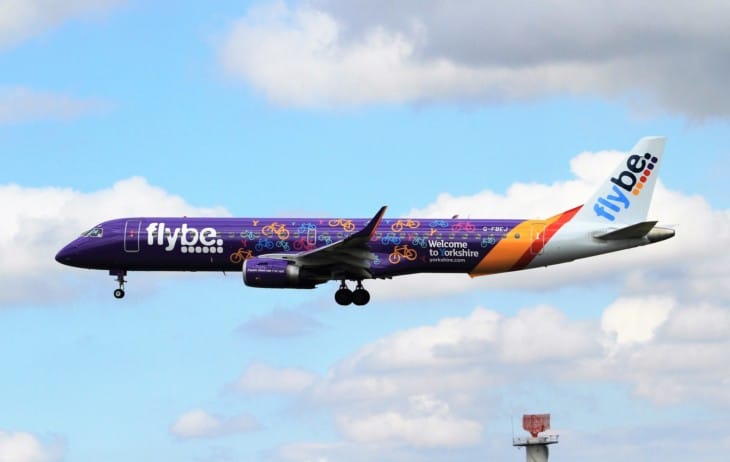
These Embraer 195s have between 100 and 124 seats depending on the model, with a wingspan of 118 ft, and is powered by two 62.3 kN (14,000lb) General Electric CF34-8E turbofans. They were a lot faster than Flybe’s other models, too, reaching nearly 630 mph.
2002 to 2010: Expanded Service and the Online Revolution
While Flybe had always been a regional model, and while it maintained that reputation, these new jets allowed it to expand its range of service.
In addition to its headquarters in Exeter and main UK hubs in Birmingham, Manchester, Newcastle, Southampton, Edinburgh, Glasgow, Cardiff, and (true to its original name) Jersey it added service to many EU countries.
Flybe was also, stretching back to its Jersey European Airways days, a low-cost airline. With the Flybe rebranding came a bevy of new ploys by the airline to win customers with their cost-cutting approach.

For example, Flybe introduced a bunch of discounts for one-way tickets. While it remains to be seen how Brexit impacts travel between the UK and EU, at this point, these inexpensive tickets between the two provided a post-9/11 incentive to fly.
What’s more, Flybe offered one class of service for everyone, or so they liked to advertise. Everyone was offered the same kind of economy seats, so surely everyone was equal? Well, as the saying from Animal Farm goes, “Some Animals Are More Equal Than Others,” and so it was with Flybe.
Everyone flew economy class, sure, but there were “Economy Plus” tickets which allowed travelers extra perks, such as complimentary snacks and drinks as well as “Flybe Executive Lounges,” which offered seat selection in advance, extra legroom, and priority check-in.
In addition, Flybe took steps to avoid overbooking and introduce improved service and compensation for customers faced with delays.
In an article on July 21, 2002 for FlightGlobal then-CEO Jim French cited “low-cost carriers, “the aftermath” of 9/11, “the commercial application of the Internet” as the “catalysts for change” behind Flybe’s moves.
The latter in particular is intriguing. Keep in mind that this way back in 2002, and part of what brought down Thomas Cook in 2019 was a failure to embrace online travel and airline booking in place of their long-standing in-person practices.
By focusing on the emerging world of online commercialization and booking in the airline industry, Flybe would seem to have put themselves in a better position.
So, why did they meet the same fate?
2011 to 2017: Mixed Signals
On one level, things seemed to be going pretty well for Flybe. Jim French received a knighthood from the Queen. In addition, on January 14, 2008, Flybe announced that they had signed an agreement with the Scottish airline Loganair.
They also acquired BA Connect the year before.
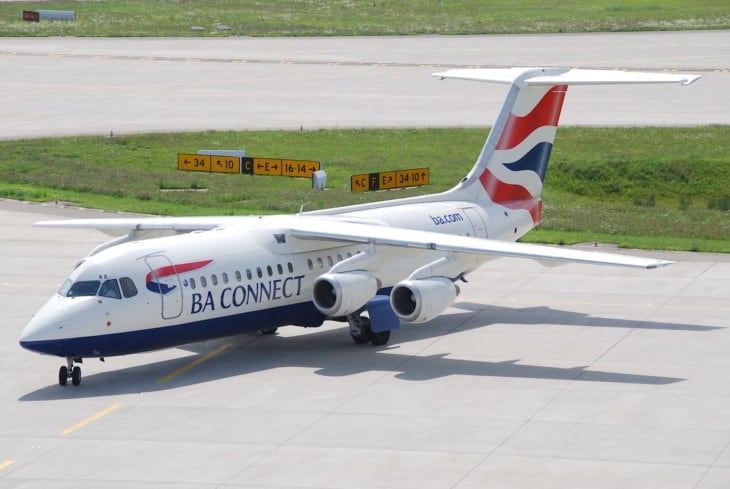
On an announcement on their website, Flybe touted this as “the first of its kind ever for a low cost carrier” and in keeping with “Flybe’s innovative philosophy…as Europe’s largest regional airline.”
In December of 2010 Flybe was traded on the London Stock Exchange.
However, trouble was beginning to brew. The pressures of operating a budget airline were building, and in 2013 the BBC reported that Flybe had sold off its routes from the Channel Islands to Gatwick Easyjet for £20 million. That wasn’t all – Flybe also ended its Belfast-London Service.
The deal raised concerns over the company’s future and air service along these routes. Additionally, at this time the BBC reported Flybe’s “pilots have agreed a 5% pay cut” and that “600 workers have been made redundant,” another bad sign.
The problems would only continue. Jim French left in August of that year, replaced by Saad Hammad, who had previously been at EasyJet. In the November 11th edition of The Telegram, it was reported that “another 500 jobs” would be axed, a move which “riled the unions.”
In that article in The Telegraph, Hammad asserted “We are shrinking to grow,” which may have made sense at the time. However, 2015 saw them add routes from Cardiff Airport (and 50 jobs along with it) to Cork, Dublin, Milan, Munich, Paris, and beyond.
These expansions also included a 2016 agreement with SAS Scandinavian Airlines to fly four of their ATR 72–9 along their routes. Hammad would leave as CEO by the close of 2016, adding unstable leadership to Flybe’s mounting woes.
If that sounds like a financial rollercoaster, that’s because it was. Flybe bled money in both 2012 and 2013, but made a small profit of £8 million in 2014, so maybe all that turbulence would give way to smoother financial skies ahead, right?
Wrong. All of those ups and downs were but a prelude to Flybe flying headfirst into a £35.7 million loss in 2015, an absolute disaster that led to routes being cut.
These problems were reflected in Flybe’s price on the London Stock Exchange. At this point, its stock price went for as low as 1p, whereas back in the comparatively cozy days of 2010, it went for as much as 295p.
A new CEO, Christine Ourmieres-Widener, tried to steady the ship, but by now Flybe was flirting with danger.
The stock price was in freefall, routes were being cut, those expansions simply weren’t paying off the way previous management had hoped, and the expenditures hamstrung what new management under Ourmieres-Widener could do.
2018 to 2019: More Departures and Takeover Bids
Flybe had peaked, and from 2018 onward, it would be a steady descent into a crash lending ruin and bankruptcy – and so the buyout efforts began.
Of course, that isn’t to say that Flybe was keen to simply “go gently into that good night” (or fly there, in this case). They still wanted to keep operating and in Dylan Thomas-style continued to “rage against the dying of the light” (or mounting debt) and keep on flying.
However, 2018 would see one of the first serious high-profile attempts to take them down. On February 22, Stobart Air announced a takeover bid, trying to buy out the entire company for an undisclosed sum.
The move was met with some optimism by investors, as a Reuters article on that day demonstrates that stock in the company went up by 26% to 43.5p. Remember, it had been as low as 1p, so this was quite a coup.
However, it was not to be, and exactly one month later, on March 22, The Telegraph announced that the deal was dead, and stock prices dropped back to their previous levels. The year proved another long, hard, money-bleeding one, and on November 14, the BBC announced Flybe was for sale.
To make matters worse, the trouble at the top continued for Flybe, as in February 2019, after two years of struggling against past expenditures but being able to do nothing to save the company, Ourmieres-Widener left.
By this point, however, reorganizing the executive structure felt more like rearranging deck chairs on the Titanic – or a doomed Flybe flight.
Even so, the airline carried on, bleeding money but still attracting suitors. Even with its cuts, it had once been the largest regional airline in Europe, so surely with the right investment strategy it could reclaim its former glory and become profitable again, right?
Well, members of the Virgin Airways-affiliated Connect Airways consortium certainly thought so, posting a £600,000 bid for poor flailing Flybe. They also received a rival offer from Stobart in February, but shot this down.
February 21, 2019 saw the sale to the former consortium completed.
2020: Debt and COVID-19 Kills Flybe
So, that’s it? Is Flybe owned by Virgin?
Well, not quite, because unbelievably (or perhaps all too believably at this point) Flybe’s situation would continue to get worse post-sale. Despite being rebranded “Virgin Connect” and brought into the Virgin Airways family, Flybe was still on shaky ground.
It got so bad Flybe worried its fleet might be seized by creditors.
And then 2020 and COVID-19 happened.

You don’t need to be told COVID-19 has ravaged the airline travel industry – as of this writing, “you” live in “that” reality right now.
But airlines such as Flybe, already on shaky ground, are and were especially vulnerable. It had already needed money, and the UK government had already been considering giving it a £100 million loan.
But COVID-19 reordered everyone’s priorities. Britain had its own COVID-19 costs and concerns (and still does) and so there would be no nick of time rescue this time.
Flybe’s end finally officially came on March 5, 2020, when it ceased all operations.
Who will replace Flybe? It’s an open question. Maybe Virgin, maybe some among its old team. Its demise is still recent enough that there are talks of reviving it, and its former administrators and executives do still retain their operating license.
But in 1979, as Flybe’s earliest predecessor launched, we learned “Video Killed the Radio Star” – and as of now, in 2020, uncertain leadership and COVID-19 have helped kill Europe’s biggest regional airline.
Related Posts



